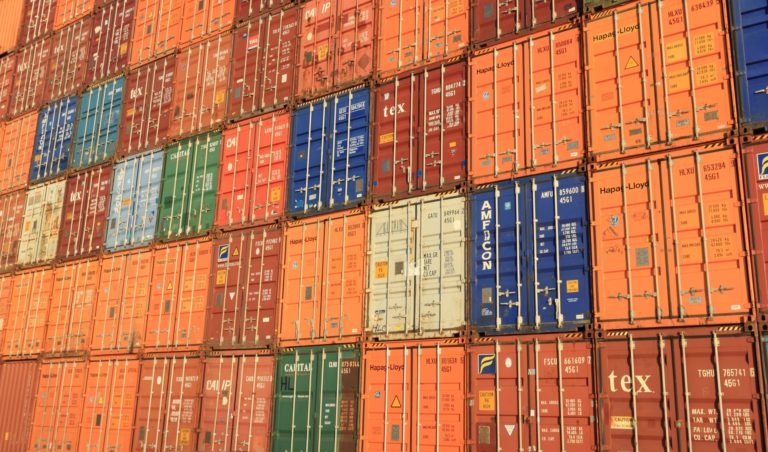The last couple of years have either created or magnified many of the economic challenges we all face today, not the least of which is the critical problem with supply chains. As Peter S. Goodman, writing for The New York Times explains, “The pandemic has disrupted nearly every aspect of the global supply chain — that’s the usually invisible pathway of manufacturing, transportation and logistics that gets goods from where they are manufactured, mined or grown to where they are going. At the end of the chain is another company or a consumer who has paid for the finished product. Scarcity has caused the prices of many things to go higher.” As you might expect, this issue began during the initial manufacturing disruptions that occurred in production centers like China when the coronavirus morphed into a global catastrophe.
Some of the biggest problems actually relate back to shipping containers, believe it or not—yes, those giant steel boxes that massive cargo ships ferry all over the world. Goodman puts it this way: “In simplest terms, [the containers] got stuck in the wrong places. In the first phase of the pandemic, as China shipped huge volumes of protective gear like masks and hospital gowns all over the world, containers were unloaded in places that generally do not send much product back to China—regions like West Africa and South Asia. In those places, empty containers piled up as Chinese factories were producing a mighty surge of other goods destined for wealthy markets in North America and Europe.” Conversely, in places like America where we export over $100 billion every year to China, we’re in a position to accept China’s full containers and then load up their outgoing ships with containers of our own goods. Like a revolving door, we’re able to exchange containers all the time.
The natural question that emerges is why don’t the ships go back and collect the empty containers? If they did that, then there won’t be a shortage of containers anymore, you might think. There’s a fly in the ointment, as it were: when ships are running errands like that, they’re not picking up or delivering goods. And travel by sea takes a long time (weeks or sometimes months, depending on the routes), which would take those ships out of the supply chain while they fetch empty containers. This will only make the problem worse.
This is all exacerbated by “the heavy influx of ships [overwhelming] the availability of docks. At ports like Los Angeles and Oakland, Calif., dozens of ships were forced to anchor out in the ocean for days before they could load and unload.” All of this is contributing to global shortages, where a hypothetical “paint manufacturer that needs 27 chemicals to make its products may be able to buy all but one, but that one—perhaps stuck on a container ship off Southern California—may be enough to halt product.” Too much demand and a crippled supply chain have resulted in a massive global headache.
Given that most experts project that these problems will persist well into 2022 (or even beyond!), there’s no light yet at the end of the tunnel. But that doesn’t mean all hope is lost. Many businesses are pivoting towards carrying products that are made locally, which actually gives many small businesses the opportunity to not only survive during these difficult times, but in many cases, thrive. Big-box companies and online warehouses, on the other hand, almost universally lean upon the global supply chain—those goods they import from far across the world are a big piece of how they maintain their competitive edge with low prices and large product availability. As shortages continue to increase their costs and reduce their stock, their advantage is slimming.
While a healthy national economy (and global one for that matter) needs these supply-chain woes to go away in the long run, and we should all be rooting for that to happen as soon as possible, it’s incumbent upon all small-business owners to not allow themselves to be victimized by these disruptions. Those massive businesses can kick debt down the road; that’s rarely a luxury for a ma-and-pa shop. Instead, we need to all diversify our resources and make sure we’re taking advantage of what we have nearby. For example, restauranteurs who are not already inking deals with local grocers (who in turn ought to have deals with local farmers) need to get on that right away. Same for retail—a local furniture retailer, as another example, would be wise to forge relationships with local craftsmen. More likely than not, most businesses should be able to find suppliers that are at least somewhat close to home. (Any place that doesn’t take a large seafaring vessel to reach is ideal!)
Small businesses banding together will succeed in any time period, not just the strange one we all find ourselves in today. Those businesses which immunize themselves against these global supply chain shortages and also manage to offer a superior customer experience will come out on the other side stronger than ever. Someday, when we can put all of this behind us, we’ll be well positioned to tackle whatever the next challenges present.
So now is the time to act. Reach out to The Brandt Group today for all your business development advice, especially where it concerns bolstering your business’s customer service. Together, we’ll figure out how to build up your relationships between your local suppliers, your employees, and—of course—your customers. Contact us now and let’s get started overcoming these problems today.



